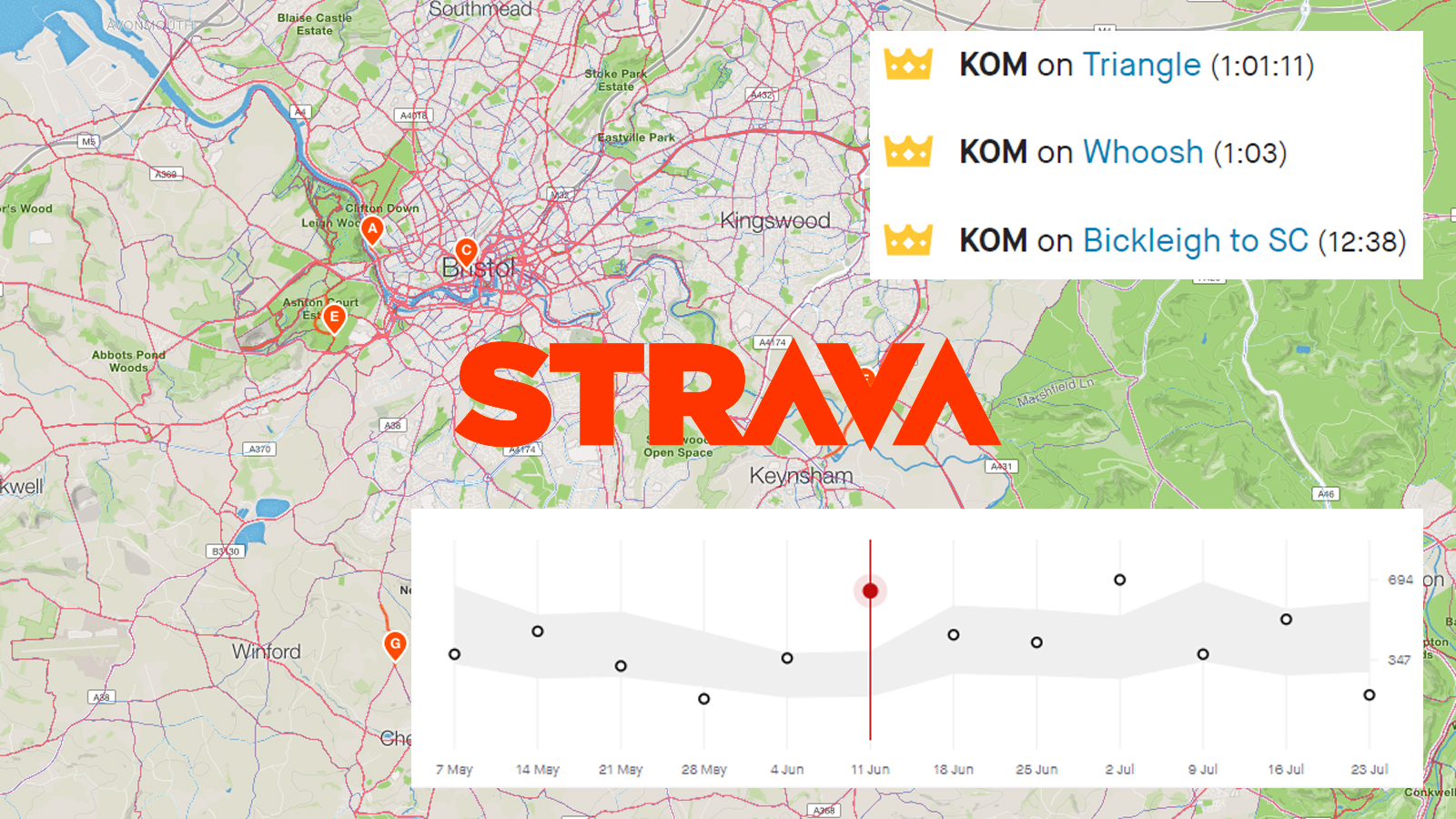Should Strava suspend segment times in high winds?
Does the platform and others like it have a duty of care to its users?

At the time of writing the UK is still reeling from its third named storm in less than a week. The south of England had an unprecedented two separate red weather warnings, meaning a danger to life, concurrently. While people were losing power, roads were blocked by falling trees and communities battled with floods, I received two separate messages within an hour or two of each other:
“Might nip out and try and bag a KOM or two.”
And
“Someone’s going to die, aren't they?”
While the first was fortunately tongue in cheek, it’s certainly a sentiment I’ve come across all too often when the wind speed reaches gale force and above. With this in mind, does Strava and other similar platforms have a duty to suspend timed segments during severe weather, not only to protect the safety of its users, but also to preserve fair competition?
The safety argument
Although Strava’s latest update makes leaderboards a paid-for feature, the ability to take a KOM/QOM on a segment is still available to all 76 million users worldwide. This is the core around which the Strava community was built, and it’s not a stretch to say that competitive leaderboards are the heart of why people use and continue to pay for the app.
For users whose draw is the thrill of victory, then the lure of a screaming tailwind may be too much to resist, and at some point it may end up in tragedy. I think as riders the majority of us have found ourselves in less than desirable conditions. I’ve been caught out several times in appalling winds and as much as I rate my bike handling skills, I’d be being dishonest if I told you I had total control over my bike at all times.
The latest race content, interviews, features, reviews and expert buying guides, direct to your inbox!
These problems are compounded by, for example, the best aero road bikes having enlarged side profiles to better cut through the air in a forward direction. Likewise deep aero wheels. Strong winds, large side profiles and, usually, wet roads are a recipe for disaster if you find yourself riding at the limit of your capabilities. A strong gust could find you in the verge at speed or worse see you heading into oncoming traffic.
Perhaps safety isn’t such a grave concern with uphill segments where the speed is generally lower, but even if you’re driving out specifically to hit your favourite climb you’re going to have to come back down again at some point.
Downhill segments, where the speeds and consequences are higher, have the potential to put riders in genuinely difficult situations.
What's more, stages of the Dubai Tour have had high winds force cancellation on safety grounds in years gone by. If it's not safe for the best riders in the world to race on closed roads, are we really going to claim it's safe for us mortals to ride at our limit in similar conditions, or worse, with the added bonus of traffic to contend with?
The fairness argument
In track and field if the wind speed exceeds 4mph then records are void, though the result of individual races still stand. While it would be frankly ridiculous to suggest the same standard be applied to Strava leaderboards, primarily as some areas would never see a valid attempt, the moral of the argument remains valid. If the primary goal of these platforms is to reward fitness then a level playing field must be maintained, at least in some capacity.
If you have worked hard on your fitness and nutrition and put the work in to set a best time up your local hill but you are bested by someone daft enough to go for a ride in winds exceeding 100mph, does that make them a better rider than you? I’d argue they have less of a survival instinct, and more opportunistic, but better? No.
As an example, there is a section of road near me that is pan flat for two miles and occasionally gets a screaming tailwind. I have been guilty in the past of going out with the express aim of setting a best time along this segment. I managed to maintain around 50kmh with relative ease at one point with the assistance of the wind, but was that a fair reflection of my abilities? Absolutely not. My data showing a crawl into the wind before turning round is a testament to that.
In any other bike race format, the conditions are at least the same for all competitors. Maybe the hill climb nationals has an unusually strong tailwind one year, but at least all competitors have an opportunity to take advantage of it on race day. Suspending segment times above a certain threshold will keep things a measure of athleticism, rather than opportunism.
How would it be implemented?
Like so many industries, weather is data heavy, perhaps more than most. Wind speed data is freely available and so it wouldn't be a stretch to simply suspend things over a certain threshold (I'm not going to throw my hat in the ring as to what this should be).
Even more simply an area could have its segments suspended if it has been given an amber weather warning or more, meaning no real data besides a polygon need be used.
However it's done, it’s certainly more than possible, though I’m not naïve enough to believe this won't be a proposition fraught with contention, not least from the apps themselves.
As we see so often with social media companies, they claim to simply be a platform. It is up to users to regulate their own safety, they'll say, likely pointing to page 15 of the terms and conditions that each user clicks 'agree' on without reading.
My view though is if a whole platform is built around enticing users to compete on public roads, the platforms have a duty to regulate things for the preservation of both safety and fair play.

Will joined the Cyclingnews team as a reviews writer in 2022, having previously written for Cyclist, BikeRadar and Advntr. He’s tried his hand at most cycling disciplines, from the standard mix of road, gravel, and mountain bike, to the more unusual like bike polo and tracklocross. He’s made his own bike frames, covered tech news from the biggest races on the planet, and published countless premium galleries thanks to his excellent photographic eye. Also, given he doesn’t ever ride indoors he’s become a real expert on foul-weather riding gear. His collection of bikes is a real smorgasbord, with everything from vintage-style steel tourers through to superlight flat bar hill climb machines.